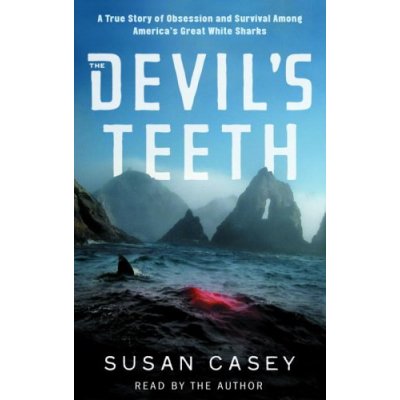The book "The Devil's Teeth" is overshadowed by real attacks in Florida

Devil's Teeth a must read book that reunites fears, facts, fascination and fiction. Being based on real stories is a bonus.

Pop culture is so ingrained in our psyches that the tragic shark attacks along the Florida Panhandle spark memories of Peter Benchley's iconic shark tale, Jaws.
"Every fear on our list": Author Susan Casey explores humans' fascination with sharks.
But real-life attacks overshadow those found in novels, and that's why The Devil's Teeth by Susan Casey is so chilling: Every word is true.
Subtitled A True Story of Obsession and Survival Among America's Great White Sharks, Casey's book recounts her time with the gigantic predators near the Farallones, a cluster of relatively unknown islands 27 miles off San Francisco, where the sharks come for part of the year.
The islands, located within a National Marine Sanctuary and surrounded by turbulent waters, are off-limits to all except biologists such as those associated with the Farallon White Shark Project (though shark-diving expeditions are available offshore). In 2001, Casey, a writer for Time magazine, obtained a one-day permit to visit. Then, two years later, she returned and lived for a few weeks on a boat just offshore.
About the book
The Devil's TeethBy Susan CaseyHenry Holt, 291 pp., $25
Her experiences are told in a lively and detailed account that pivots on the sharks and why we love to hate them:
"Great white sharks ... occupy the bean-shaped niblet of our cerebral cortex reserved for fear of being eaten by something — particularly something that lurks, hidden, in another element, waiting to burst into ours. Great white sharks, emerging out of lightless depths with a maniac smile, neatly encapsulate every fear on our list."
Centuries ago, sailors called the islands "Devil's Teeth" because of their jagged cliffs and dangerous waters. Casey uses vivid descriptions to take us there.
After a great white kills a seal, she writes, "the seal was whittled down to kabob-sized remnants."
Of the amazing number of birds on the island: "There were one hundred thousand murres on the island ... packed tight as bowling pins on the sea cliffs."
On the challenge of living in a desolate place: "Nervous breakdowns snuck up on people after an eight-week run of bleak weather, a few missed grocery drop-offs, a piggish housemate or two, and days spent watching animals kill and eat each other."
And on getting close to a shark: "They could plainly see the scars all over its head and its two-inch-long teeth, backed by rows of spare teeth."
Casey weaves in the history of the Farallones and the environmental horrors visited upon them through the centuries. In the 19th century, the seals were hunted nearly to extinction, and entrepreneurs stripped the islands of more than 10 million bird eggs to be sold on the mainland.
The islands received protected status nearly four decades ago, and the seals are back. So are the birds. And so, too, are the sharks.
The great whites "seem like the closest thing we've got to living dinosaurs," she writes. "Their otherness is what both compels us and scares the pants off us. That, and their several sets of teeth. It's a complicated relationship."

0 Comments:
Post a Comment
<< Home